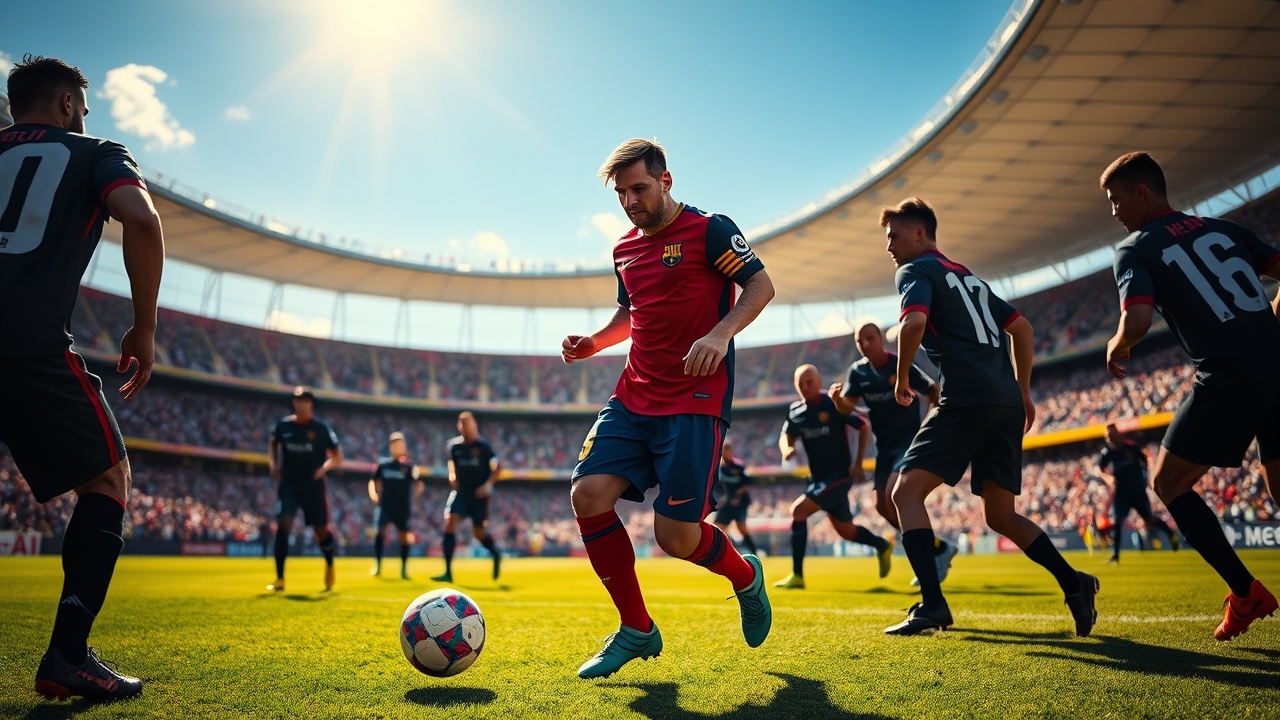Lionel Messi’s Impact on Inter Miami
Lionel Messi’s impact on Inter Miami’s performance during the Club World Cup opener against Egypt’s Al Ahly was unmistakable. However, it raises concerns about the drawbacks of excessive reliance on one of football’s greatest talents. While Messi dazzles with his unique playing style, turning the team into an unpredictable force, it brings a degree of risk that may prove hazardous, as evidenced during the goalless draw on Saturday.
The Messi Effect on Team Dynamics
In his career, Messi has garnered a reputation for transforming team dynamics, whether he’s playing for Barcelona, Paris Saint-Germain, or the Argentine national squad. His teammates instinctively funnel the ball towards him at every opportunity, creating a situation where the squad appears to revolve around his presence, a tendency that has been amplified at Miami.
Tactical Setup and Challenges
Under the guidance of Argentina’s coach Lionel Scaloni, Messi benefits from a tactical setup that allows him the freedom to roam from the right flank while minimizing his defensive responsibilities, thereby maintaining the team’s balance. In contrast, Miami’s manager Javier Mascherano struggled to implement a similar structure, leading to chaotic first-half displays where organization was notably absent. After the match, Mascherano candidly acknowledged their need for improvement in transition play, emphasizing the vulnerabilities presented during counter-attacks from the opponents.
Messi’s Role in Offense and Defense
Against Al Ahly, Messi initially teamed up with Luis Suarez in a setup resembling a 4-4-2 formation but soon found it essential to drop deeper to involve himself in the game. This dependence presents a critical dilemma: while Messi’s retreats can ignite offensive play, they can also disrupt Miami’s overall structure. Without him in a forward position, the team lacks significant ball progression, yet his deep positioning often leads to disarray within the team formation.
The match highlighted these contradictions, particularly when Messi attempted to play a one-two in the 16th minute. A mistimed pass led to a dangerous three-on-two rush for Al Ahly, exposing Miami’s frailty in defensive organization.
Mascherano’s strategy involves high and wide movements from full-backs, while wingers tuck inside, but the resulting gaps leave the team vulnerable to swift counter-attacks. The early stages of the game revealed clear issues, particularly as the team struggled to adapt to pressing situations.
Messi’s Vision and Its Consequences
Messi’s unique vision granted Miami an edge, illustrated with his footwork and ability to orchestrate plays. However, this same ability creates voids, placing the team at risk of being exploited by the opposition. In one notable incident, Messi drifted wide to evade his markers, inadvertently creating space that left Miami susceptible to quick transitions when possession was lost.
As the match progressed, Messi frequently found himself deeper in search of the ball, attempting high-risk plays that often ended in thwarted attempts, allowing Al Ahly to launch counter-attacks with minimal opposition. It became evident that Miami’s reliance on Messi created a tactical risk that could have been severely punished by a stronger opponent.
Strategic Adjustments and Future Outlook
In the second half, Mascherano made strategic adjustments by substituting Aviles to tighten defense, which improved Miami’s pressing game. However, Messi continued to drop back, which reintroduced counter-attacking threats from Al Ahly late in the match. Despite Messi’s undeniable brilliance on the pitch, managing his influence while maintaining team integrity proved a daunting challenge.
Moving forward, Mascherano must devise a strategy that harmonizes Messi’s extraordinary abilities with a more robust team cohesion to prevent potential embarrassment against stronger teams, such as Porto in their upcoming matchup.




